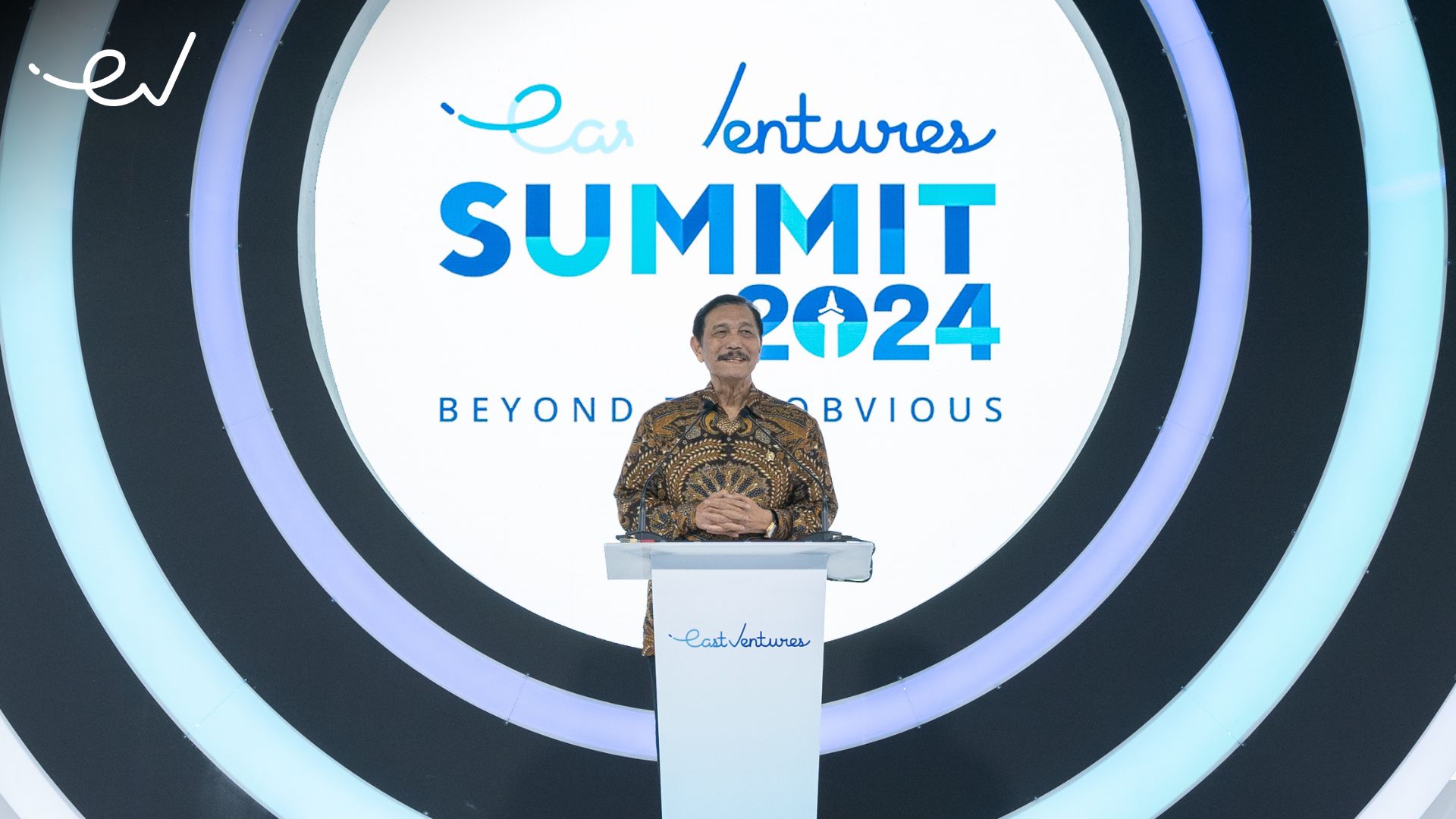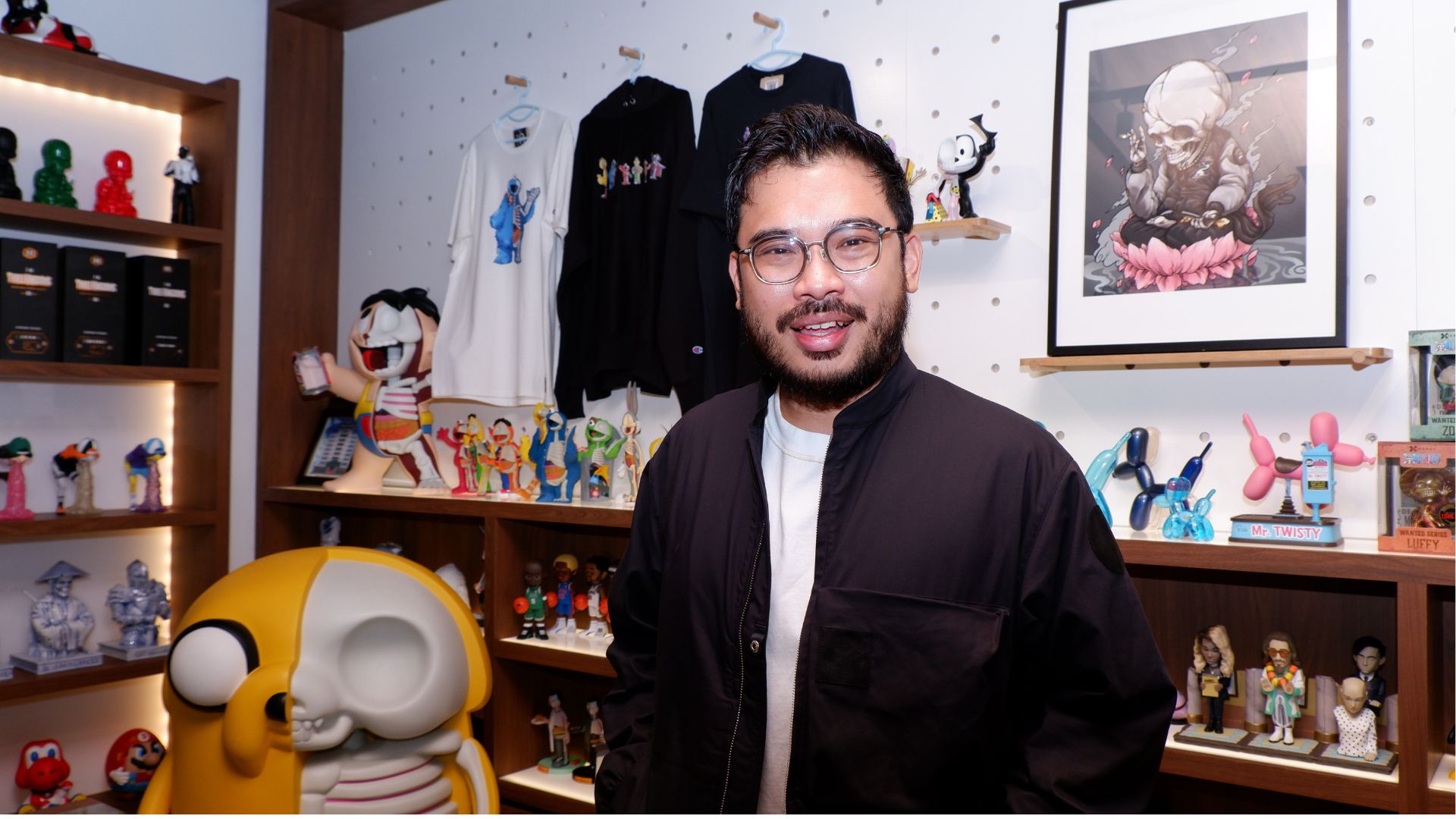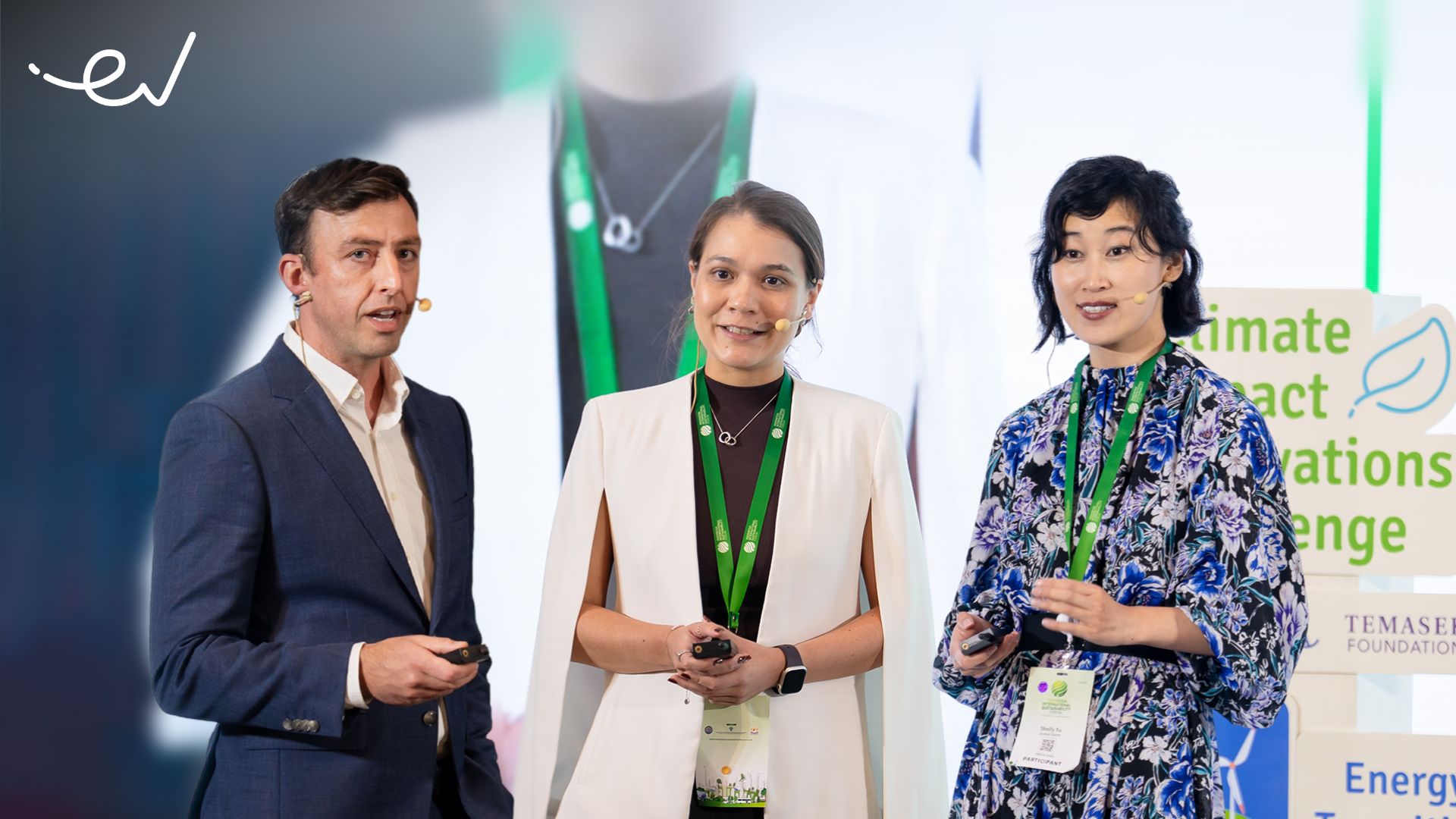At the East Ventures Summit 2024, Mr. Luhut Binsar Pandjaitan, Coordinating Minister for Maritime Affairs and Investment of the Republic of Indonesia, outlined the vision for ‘Golden Indonesia 2045.’ The excellency highlighted the essential role of the youth in achieving economic growth of 5%-6.5% in the next decade, thanks to the demographic bonus expected to last until 2041-2042.
Initiatives include creating exceptional high schools for the nation’s brightest minds to prepare for global universities, a research hub in Morowali for technological advancements in nickel processing, enhancing food security through genome research and promoting sustainable economic practices.
With a focus on new industries like seaweed farming and a goal of net-zero emissions by 2060, the Minister emphasized the young generation’s critical role in driving innovation, digitalization, and environmentally friendly initiatives toward realizing Golden Indonesia 2045.
Below is the summary of Mr. Luhut Binsar Pandjaitan’s transcribed keynote speech during the East Ventures Summit 2024, highlighting several key points:
1. Economic growth goals
As a nation, we now aspire to achieve an economic growth rate of 5% to 6.5% over the next five to ten years. If we achieve this, Indonesia will be a high-income country. In my opinion, it will depend on us, and young people here today should work hand-in-hand since our current demographic bonus will only last until 2041 or 2042.
The young generation plays an important role in this, proven by the concentration of young people in Java whose main activity is working, reaching almost 55%. We have to maximize the current demographic. That being said, we must achieve efficiency. If we cannot harness this demographic bonus and do not become a high-income country by 2035-2040, we will become an aging population. Compared to other countries around us, our current position is genuinely advantageous.
2. Human resources and education
Our country must enhance human resources and research and break free from the middle-income trap. This is why the elected president is planning to build 40 exceptional high schools to put together the ‘crème de la crème’ (the best of the best) of Indonesian students who will be prepared to go to the world’s most distinguished universities, such as Tsinghua University, Stanford, MIT, and Harvard. There will be considerable, everlasting funding for this project. These students will be encouraged to major in STEM. Now, we are selecting where to build these high schools. So many bright minds in certain areas do not have opportunities. Strengthening the quality of human resources and innovation will increase Indonesia’s competitiveness.
3. Research and innovation
The government is planning to establish a special research area in Morowali and intends to bring in talented professors from China to conduct research, particularly on nickel and its by-products such as cathodes and precursors. Four years ago, we sent over 40 Indonesian students to pursue STEM studies in China so that they could independently develop HPAL, precursors, and cathodes. I am confident that we can make significant progress in this area. Despite Indonesia’s improvement of 7 ranks in competitiveness, there are still many areas for improvement. The government cannot accomplish all of this alone. Future development needs to align with global trends, particularly in terms of digitalization, climate change, and geopolitical changes.
4. Digital transformation initiatives
Artificial Intelligence (AI) has become increasingly important, driving significant advancements in various sectors. For instance, the implementation of the e-catalog system in government procurement has directly reduced corruption by enhancing transparency and efficiency. Similarly, the Simbara app has been instrumental in monitoring coal exports, ensuring better compliance and oversight. However, despite these successes, many organizations still rely on outdated, conventional systems that are prone to dishonest practices. The transition to digital systems across all organizations is essential to eliminate these vulnerabilities and promote integrity.
5. Food security advancement
Previously, we had not conducted genome research in this area, but now we are focusing on it to develop higher-yielding seeds for crops like potatoes and chilis, as the current seeds are between 40 and 100 years old. Additionally, our examination of Carbon Capture & Storage (CCS) has revealed that we have nearly 670 gigatons of storage capacity, where CO2 can be injected. This presents a promising business opportunity.
6. Sustainable development
Mr. Joko Widodo’s programs will be continued by Mr. Prabowo. A few days ago, I spoke with the newly elected president and emphasized that government technology (govtech) will be crucial. By integrating all ministries and organizations into a single portal, govtech will streamline operations, resulting in significant savings and boosting economic growth. The Minister of Finance mentioned that the tax system is currently transitioning to a digital format, with completion expected within a year. Once fully implemented, compliance with our tax system will be mandatory, which I believe could lead to a 1.5% to 2% increase in our tax revenue over the next five years.
We are collaborating with Temasek to develop the seaweed industry, which has the potential to be processed into organic fertilizers and food products. I encourage young people to take a serious interest in this industry, as it could follow a similar trajectory to nickel—initially overlooked, but ultimately becoming significant. Seaweed will be cultivated in a designated bay, with a harvest cycle of just 35 days.
Sustainable and environmentally friendly economic development is also crucial. In this context, the previously mentioned Carbon Capture & Storage (CCS) initiative is particularly important as we aim to achieve net zero emissions by 2060, or even earlier by 2050.
7. Industrial and export growth
Regarding economic growth, industrialization, and downstreaming, this year’s figures have shown a noticeable increase compared to the previous year. We are currently exploring the possibility of trade exports to China valued at US$120 billion, with potential transactions conducted in yuan (RMB). Such initiatives could alleviate pressure on the rupiah, making this a crucial area for young professionals to monitor closely.
8. Recycling innovation
Following that, we are developing an ecosystem, including a recycling industry in Morowali, where used car lithium batteries will be recycled with an extraction efficiency of 95%-97%. Despite our progress, we still face challenges in metallurgy and material science, which is why we are collaborating with several Chinese universities. While Bandung Institute of Technology (ITB) has a Metallurgy faculty, practical experience remains limited. However, with the establishment of industries in Morowali and Weda Bay, and the expertise gained by Indonesian students, advancements such as HPAL (High-Pressure Acid Leach) technology are now becoming a reality.
As I mentioned earlier, digitalization has become a top priority for the government. The Simbara app, for instance, ensures traceability in the minerals and coal sector, preventing illegal mining by providing detailed information on sources, production levels, calorific value, royalty payments, and tax compliance. If a company has outstanding debts to the government, the app will automatically block its export activities.
In terms of achieving net zero emissions, we are taking a strategic approach to ensure continued economic growth. Indonesia’s carbon emissions, at 4.5 tons per capita, are relatively low compared to developed countries like the USA, Russia, and China. This is a positive sign that we are on the right track. We have a comprehensive plan extending to 2040, with a significant announcement coming this October regarding 56-58 gigawatts of hydropower, geothermal energy, and wind-solar panel projects.
9. National pride and collaboration
To achieve ’Golden Indonesia 2045,’ we must maintain economic growth above 5%, which requires all of us to work together. Your contributions are crucial—without innovation from the younger generation, we risk falling behind. Both short-term and long-term strategies are essential, focusing on digitalization, sustainable development, and strengthening our human capital. Most importantly, we must take pride in being Indonesians and drive our nation forward.







